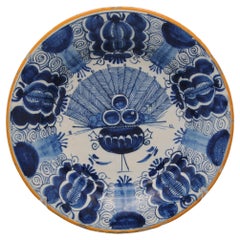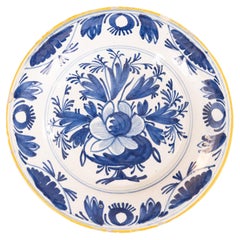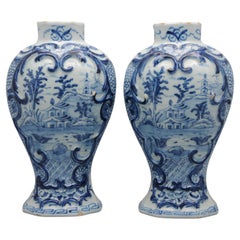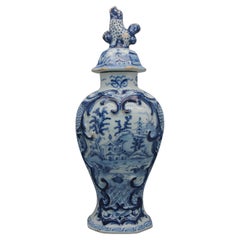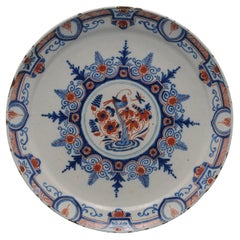Delft Delft and Faience
18th Century Dutch Chinoiserie Antique Delft Delft and Faience
Earthenware, Delft, Faience
18th Century Dutch Antique Delft Delft and Faience
Delft, Faience
Late 18th Century Dutch Rococo Antique Delft Delft and Faience
Earthenware, Delft, Faience
Late 18th Century Dutch Rococo Antique Delft Delft and Faience
Earthenware, Delft, Faience
Early 18th Century Dutch Chinoiserie Antique Delft Delft and Faience
Earthenware, Delft, Faience
18th Century Dutch Chinoiserie Antique Delft Delft and Faience
Earthenware, Delft, Faience
Mid-18th Century Dutch Chinoiserie Antique Delft Delft and Faience
Earthenware, Delft, Faience
Mid-18th Century Dutch Chinoiserie Antique Delft Delft and Faience
Earthenware, Delft, Faience
18th Century Dutch Chinoiserie Antique Delft Delft and Faience
Earthenware, Delft, Faience
Early 18th Century Dutch Chinoiserie Antique Delft Delft and Faience
Earthenware, Delft, Faience
18th Century Dutch Chinoiserie Antique Delft Delft and Faience
Earthenware, Delft, Faience
Early 18th Century Dutch Chinoiserie Antique Delft Delft and Faience
Earthenware, Delft, Faience
Late 18th Century Dutch Chinoiserie Antique Delft Delft and Faience
Earthenware, Delft, Faience
1790s Dutch Rustic Antique Delft Delft and Faience
Faience
Early 18th Century Dutch Chinoiserie Antique Delft Delft and Faience
Ceramic, Delft
18th Century Dutch Chinoiserie Antique Delft Delft and Faience
Earthenware, Delft, Faience
Late 18th Century Dutch Rococo Antique Delft Delft and Faience
Delft
Late 19th Century Dutch Baroque Antique Delft Delft and Faience
Ceramic, Delft
18th Century Dutch Antique Delft Delft and Faience
Delft, Faience
Late 18th Century Dutch Chinoiserie Antique Delft Delft and Faience
Earthenware, Delft, Faience
18th Century Dutch Antique Delft Delft and Faience
Delft, Faience
Late 19th Century Dutch Baroque Antique Delft Delft and Faience
Ceramic
Late 18th Century Dutch Chinoiserie Antique Delft Delft and Faience
Earthenware, Delft, Faience
Mid-20th Century Dutch Delft Delft and Faience
Ceramic
Late 18th Century Dutch Chinoiserie Antique Delft Delft and Faience
Earthenware, Delft, Faience
Early 19th Century Dutch Chinoiserie Antique Delft Delft and Faience
Earthenware, Delft, Faience
Early 18th Century Dutch Chinoiserie Antique Delft Delft and Faience
Brass, Bronze
Early 18th Century Dutch Antique Delft Delft and Faience
Earthenware, Delft, Faience
18th Century Dutch Neoclassical Antique Delft Delft and Faience
Earthenware, Delft
Early 19th Century Dutch Chinoiserie Antique Delft Delft and Faience
Earthenware, Delft, Faience
18th Century Dutch Antique Delft Delft and Faience
Delft, Faience
Mid-18th Century Dutch Chinoiserie Antique Delft Delft and Faience
Earthenware, Delft, Faience
18th Century Dutch Baroque Antique Delft Delft and Faience
Delft, Oak
Early 19th Century Dutch Chinoiserie Antique Delft Delft and Faience
Earthenware, Delft, Faience
18th Century Dutch Chinoiserie Antique Delft Delft and Faience
Earthenware, Delft, Faience
Late 18th Century Dutch Chinoiserie Antique Delft Delft and Faience
Earthenware, Delft, Faience
18th Century Dutch Chinoiserie Antique Delft Delft and Faience
Earthenware, Delft, Faience
Mid-18th Century Dutch Chinoiserie Antique Delft Delft and Faience
Earthenware, Delft, Faience
Early 19th Century Dutch Baroque Antique Delft Delft and Faience
Delft
18th Century Dutch Chinoiserie Antique Delft Delft and Faience
Earthenware, Delft, Faience
Mid-20th Century Dutch Delft Delft and Faience
Pottery
18th Century Dutch Chinoiserie Antique Delft Delft and Faience
Earthenware, Delft, Faience
Early 19th Century Dutch Chinoiserie Antique Delft Delft and Faience
Earthenware, Delft, Faience
Mid-18th Century Dutch Chinoiserie Antique Delft Delft and Faience
Earthenware, Delft, Faience
Late 18th Century Dutch Chinoiserie Antique Delft Delft and Faience
Earthenware, Delft, Faience
Early 18th Century Dutch Chinoiserie Antique Delft Delft and Faience
Earthenware, Delft, Faience
18th Century Dutch Chinoiserie Antique Delft Delft and Faience
Delft, Faience
1950s Unknown Vintage Delft Delft and Faience
Ceramic
Early 18th Century Dutch Chinoiserie Antique Delft Delft and Faience
Earthenware, Delft, Faience
Late 18th Century Dutch Chinoiserie Antique Delft Delft and Faience
Ceramic
Late 17th Century Dutch Antique Delft Delft and Faience
Earthenware, Delft, Faience
Late 18th Century Dutch Chinoiserie Antique Delft Delft and Faience
Earthenware, Delft, Faience
18th Century Antique Delft Delft and Faience
Delft, Faience
Early 18th Century Dutch Chinoiserie Antique Delft Delft and Faience
Earthenware, Delft, Faience
18th Century Dutch Chinoiserie Antique Delft Delft and Faience
Delft, Faience
18th Century Dutch Antique Delft Delft and Faience
Delft, Faience
18th Century Dutch Chinoiserie Antique Delft Delft and Faience
Delft, Faience
Mid-18th Century Dutch Chinoiserie Antique Delft Delft and Faience
Earthenware, Delft, Faience
Delft delft and faience for sale on 1stDibs.
Creators Similar to Delft
- What is Delft known for?1 Answer1stDibs ExpertApril 5, 2022Delft is known for its blue ceramic pottery called Delftware. Artisans in the Dutch city began producing the earthenware during the 16th century. In addition, Delft is the home of the 17th-century Dutch Baroque painter Johannes Vermeer. You'll find a range of Delftware on 1stDibs.
- How can I tell if Delft is real?1 Answer1stDibs ExpertApril 5, 2022To tell if Delft pottery is real, look at it under a magnifying glass. Authentic Delftware should show visible brushstrokes, a sign that the pieces have hand-painted images. You can also turn the piece over and look for a crown cross marking with the words Handpainted, Delft Blue, Made in Holland. On 1stDibs, find a collection of expertly vetted Delft pottery.
- When were Delft tiles made?1 Answer1stDibs ExpertMarch 22, 2022Delft tiles were made during the 17th and 18th centuries. The term refers to earthenware tiles with tin-glaze finishes that were meticulously hand-painted by artisans living in the city of Delft in what is now the Netherlands. Find a selection of Delft tiles on 1stDibs.
- 1stDibs ExpertOctober 7, 2024The difference between Delft and Chinoiserie is that one is a specific type of pottery, and the other is a style of pottery. Chinoiserie is a general term for pottery and other decorative objects produced by Western artisans that draw inspiration from traditional Chinese functional and fine arts. Delft, or Delftware, is tin-glazed pottery made through techniques that originated in Delft, Netherlands. Many pieces of Delftware are examples of Chinoiserie because their decorative embellishments were inspired by Chinese porcelain. On 1stDibs, explore a selection of Delftware and Chinoiserie pottery.
- 1stDibs ExpertMay 3, 2024To tell how old your Delft is, look for the maker's markings. On most pieces, you will find the painter's initials as well as a two-letter date code. By comparing the date code on your piece to information provided on trusted online resources, you can find out its year of production. If you have trouble locating the date code, a certified appraiser or knowledgeable antiques dealer can assist you with dating. Explore a diverse assortment of Delft pottery on 1stDibs.
- 1stDibs ExpertFebruary 22, 2021Delftware often has a maker's mark on the base or back of the item consisting of letters or figurative symbols to show where the item was manufactured. Today markings will say hand-painted in Holland as well as the phrase Delft blue in Dutch or English.
- 1stDibs ExpertApril 5, 2022Yes, Delft tiles are still being produced. Delft pottery, also known as Delftware or Delft Blue, refers to a tin-glazed earthenware crafted in the city of Delft in the Netherlands. Delftware is highly coveted due to the intricate nature of the design and is a favorite among home decor enthusiasts. Shop a wide range of authentic Delftware on 1stDibs.
- How much is Delft pottery worth?1 Answer1stDibs ExpertSeptember 16, 2024How much Delft pottery is worth varies based on characteristics like type, style, age and condition. Selling prices usually start in the low hundreds, with the most valuable examples of Delft pottery worth $10,000 or more. True blue Delftware originates only from a single location: Delft in the Netherlands. These precious pieces pair well with French faience. Unlike Delftware, French faience utilizes a lead-and-tin glaze. To find out how much a specific piece is worth, have a certified appraiser or knowledgeable antique dealer evaluate it. On 1stDibs, shop a large selection of antique Delft pottery.
- Is Delft Blue still made?1 Answer1stDibs ExpertApril 5, 2022Delft Blue is in fact still made today. There is one factory left, the Royal Dutch, which has been in operation since 1653. It continues to make delft blue using the traditional methods. You’ll find a variety of Delft blue products from some of the world’s top sellers on 1stDibs.
- 1stDibs ExpertSeptember 23, 2024To identify your Delft pottery marks, try using the factory mark database on the Delfts Aardewerk platform. Several Dutch museums joined forces to create this site in order to educate the public and collectors about Delftware. On it, you'll find hundreds of pictures of makers’ markings and a handy search feature for browsing the images based on a description of your marking. If you're unable to find your mark on the site, a certified appraiser or knowledgeable antique dealer can aid you with making an identification. Explore a selection of Delft pottery on 1stDibs.
